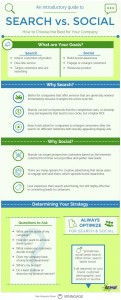Recruiting new employees can cost a pretty corporate penny. But the price tag of a new hire doesn’t stop after they’ve accepted your job offer. It continues through the onboarding, orientation and training processes. The key is understanding where you’re spending the most money and where a change in the hiring process would make the most impact. Often, that’s during new hire onboarding. Why? The ease and efficiency of signing the paperwork and filling in all the blanks with the right information is indicative of the efficiency of any given organization. The longer it takes to onboard, the longer it takes to fill the position with someone who can perform the open role.
Step 1. Measure the ROI of current onboarding process.
Getting new hires through the onboarding paperwork opens the gateway to the next steps in the new hire process; the faster they sign all of the dotted lines, the faster you’re able to train them to become efficient in their role. On average, it takes a little over six months for newly hired employees to break even on the amount they have cost the organization. With an automated and expedited system, employers are able to send their candidates through the onboarding process with ease.
Step 2. Assess costly aspects of hiring a new employee.
What is the cost of materials? The cost of personnel? What about the sheer time spent processing the paperwork? Any way you look at it, there’s most likely a way your onboarding process costs the company. Take the materials for example: when new hires complete their tax forms it takes paper — reams of paper when you’re going through a mass hiring cycle. So how can you reduce the amount of materials that go into the paperwork? Remove the paper – take the onboarding process online with a simple system that is easy for employees to fill out and for employers to organize.
Step 3. Automate where possible.
We specialize in automating onboarding. We’re passionate about it and we look for ways to make it easier for organizations to create a great candidate experience. In a previous post, we noted:
“Unfortunately, 35% of companies admit to spending no money on an onboarding program, which is both a lie (printing those new hire forms does cost money, y’know!) and disappointing. Companies want to cut corners wherever they can, and new hire onboarding suffers as a result.”
Instead of cutting corners in all the wrong places, take a shortcut in time and money by automating the process. Free up the time of your employees who process onboarding paperwork, and free up the space in your filing cabinets. With online storage of these employee files, you have easy access to their information come tax season.
Step 4. Transition to a well-managed onboarding program.
You’re not the only one considering changing the way you onboard your new hires. With 71% of organizations modernizing their onboarding programs, it’s time you join your talent competitors. This is the next benchmark for updating the preliminary stages in the hiring process. To build better loyalty, maintain higher performance, and improve retention, organizations need to change and automate their onboarding process as part of a well-oiled machine.
It isn’t an inexpensive endeavor to onboard a new hire. It takes the time and energy of those who process the paperwork and the money of the organization to supply the paper it’s printed on. However, you can change it. By measuring the ROI of your onboarding and assessing the most expensive parts of hiring a new employee, you can find areas that would benefit from automation. All of this is to transition your onboarding program into a smooth process for you and your employees.
Business & Finance Articles on Business 2 Community(131)
Report Post


